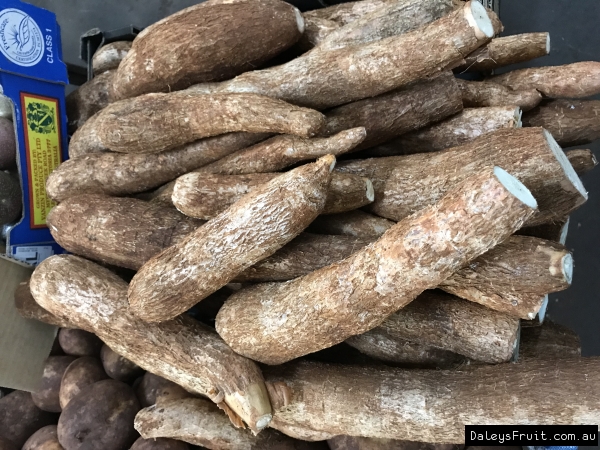Cassava
Manihot esculenta$19.75 ($5.90-$19.75 choose a size)
When will it be in Stock?
We previously had the most to buy in Oct and Aug. With limited quantities for sale in other months. They are unlikely to be available in Mar and Apr. Remember to click above to get notified when it is available once more.
Specifications of Cassava
Preferred Climate Tropical, SubtropicalLearn About Climate Zones
Grown From CuttingLearn About Propagation Methods
Max Height (when in the ground with good conditions) 1-2m
Plants required to Pollinate 1 (Self Pollinating)Learn about Pollination
Can it Handle Frosts? Sometimes
Amount of leaves in Winter? All Leaves (Evergreen)
Quarantine Restrictions to these Areas WA
Suitability in Pots Yes
Water Requirements Drought Hardy (Little Watering)
Is it a Dwarf Fruit Tree? Can be pruned to 2m
Time to Fruit/Flower/Harvest First Year
Sun or Shade Full (Sun:80%-100%)
Preferred Soil Type Perfect Drainage (Sand/Volcanic), Good Drainage, Poor Drainage (Clay)
Soil pH Moderately Acidic (5.5-6.5), Neutral (6.6-7.3pH)
Fruiting/Harvest Months January, February, March, April, May, June, July, August, September, October, November, December
Fertiliser All Purpose
Plant Width 1-2m
Growth Rate Fast
Create a Filter to find similar plants
Customers also bought
These plants are often purchased together. Also check plant information for suitability in your orchard.
Jujube - Honey Jar
$109.00 ($109.00-$119.00 choose a size)
Jujube - Sherwood
$114.00 ($114.00-$149.00 choose a size)
Palm - Dwarf Acai
$39.00 ($39.00-$59.00 choose a size)
Nashi Pear - Hosui
$54.00
Dwarf Persimmon - Fuyu (NA)
$79.00 ($79.00-$79.00 choose a size)
Avocado - Reed (A)
$54.00 ($54.00-$79.00 choose a size)
Customer Tips & Reviews Cassava
GILBERTON, VIC
Cassava
Im hoping to eat some of this. It is in an area of the garden Im not going to at the moment so I will see how it goes later.
Cassava
We come from Kenya and grow lots of cassava they are very nice n soft we peel the skin roast bbq add chillisalt lemon juice n jus yummyAlso make crisps chips out of it
Cassava
Try growing them in a plastic house on a pallet in a controlled temperature enviroment/solar power/variable heat/lamp
Hewett, SA
Cassava
There are pink, white and yellow flesh. The yellow flesh is by far the best one. I wonder if I can grow this in Adelaide, even if I plant it in a pot. I miss eating cassava, regardless of the variety.
Hewett, SA
Cassava
I come from a country of South America and I grew up eating lots of cassava. It can be cut into 10 cms pieces and fried they are vey nice. You can make soup with it too. Boil it and make it into a paste and grate lots of cheese and bake it.
Brassall, Ipswich, QLD. AUSTRALIA, Australia
Cassava
I have mine in loose fertile soil - plenty of manure; n get kilograms of large tubers from each plant. Water well; full sun. We and neighbours experiment on how to prepare / cook / serve the cassava in place of potatoes.
CAWONGLA, NSW, Australia
I have one plant, still in a pot, but am a bit cautious about whether it is an edible-leaf or an edible-tuber variety, as I am sure it is either/or, and then it is unsafe to eat the other part.
Melbourne, VIC
Cassava
Cassava is a tropical root crop, no it will not grow in Cessnock and Hunter Valley, Cassava does not tolerate freezing conditions.It requires at least 8 months of warm weather to produce a crop.
Cassava
Does cassava grow in areas where there is frosts. eg Cessnock hunter valley N.S.W
Cassava
We got two varieties of cassava - white and yellow flesh. Yellow one taste better and cheesy a bit





































